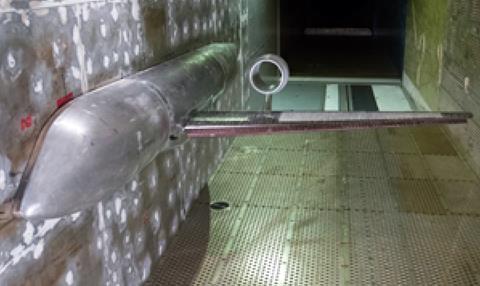Russian researchers are refining the wing design for a proposed short-haul aircraft with overwing-mounted engines, to increase laminar flow.
Initial models of the experimental aircraft design underwent windtunnel tests in 2017.
But the Central Aerohydrodynamic Institute has constructed a large-scale semi-model – featuring the left wing and engine, and left half of the fuselage – to carry out more detailed analysis of airflow.
“Experiments confirmed the presence of extended laminar sections on the upper surface of the wing,” the institute states.
The research examined methods to eliminate “premature separation” of the airflow at particular locations near the wing root, through the installation of a vortex generator on the fuselage ahead of the wing.

“Various positions of the generator were investigated,” the institute says, adding that an “optimal” location was found which increased the maximum co-efficient of lift by 5% in the landing configuration.
The high-lift mechanisms of the wing’s leading edge have also been studied in order to increase their efficiency.
Aircraft and missile aerodynamics department head Anatoly Bolsunovsky says the project has established “solid scientific and technical groundwork” which can be applied to a practical aircraft design.
Along with the laminar flow of its low-sweep wing, the proposed design’s overwing-engine configuration offers the potential for reduced engine noise and protection from foreign-object ingestion.

























